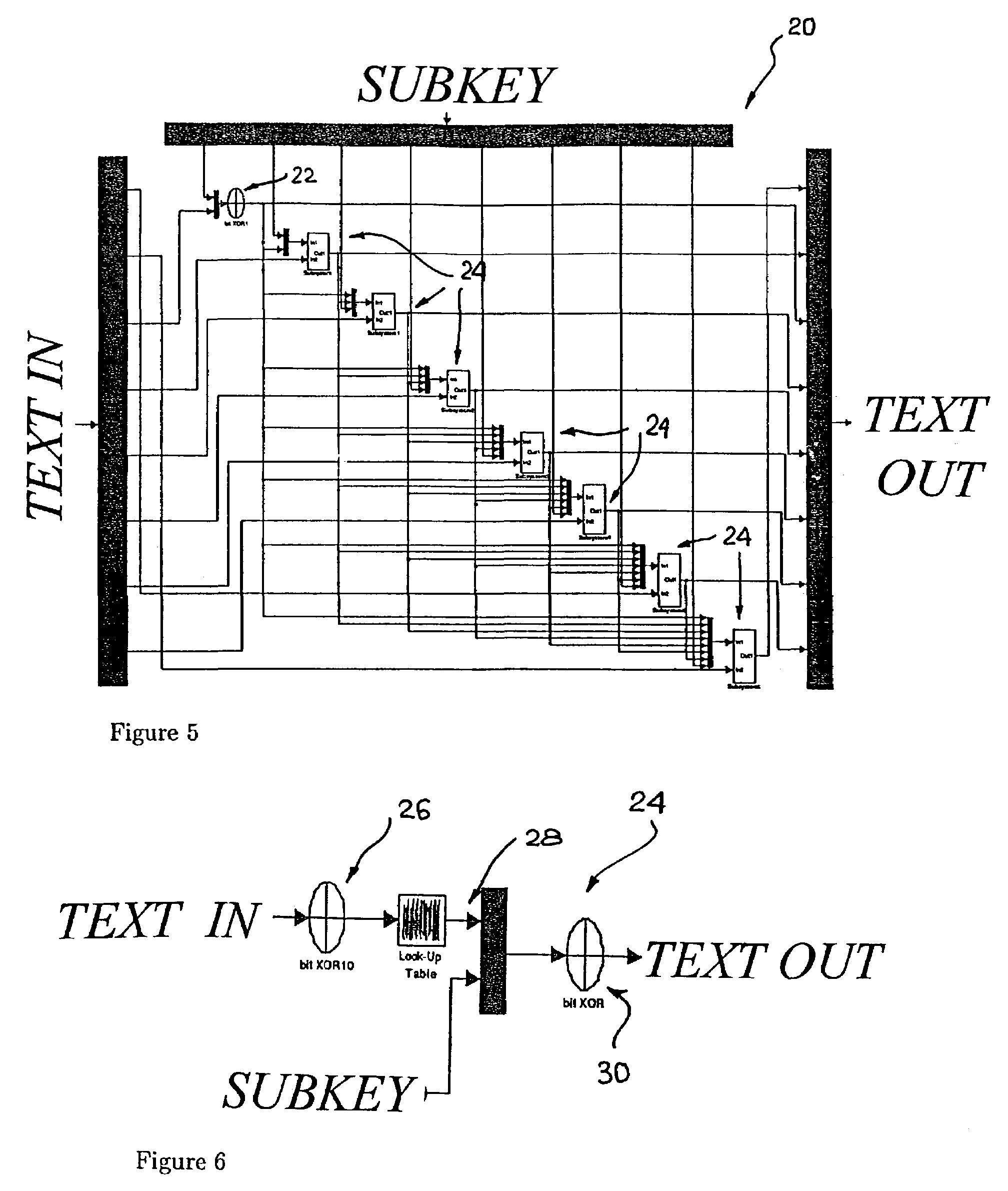Chaos-based data protection using time-discrete dynamical systems
a dynamical system and data protection technology, applied in the field of cryptography techniques, can solve the problems of inability to insufficient security of algorithms, and inability to always have provably secure solutions, etc., and achieve the effect of convenient implementation
- Summary
- Abstract
- Description
- Claims
- Application Information
AI Technical Summary
Benefits of technology
Problems solved by technology
Method used
Image
Examples
Embodiment Construction
Block Encryption Algorithms
[0036]Let B0 be a plaintext block of length 64 bits (L=8 bytes). Here Xi,0 . . . Xi,7 stand for the eight bytes of the block Bi, i.e. Bi=Xi,0 . . . Xi,7. The ciphering process consists of r rounds of identical transformations applied in a sequence to the plaintext block.
[0037]The encryption transformation is given by:
xi,k+1=xi−1,k⊕fk−1[xi−1,1, . . . ,xi−1,k−1,zi−1,k−1], (1)
where i=l, . . . , r, k=1, . . . , 8, f0=zi,0, x8≡x0 and x9≡x1, and zi,0zi,7 are the eight bytes of the subkey zi which controls the i-th round. The functions f1, . . . , f7 have the following form
fj=f(x1⊕x2⊕ . . . xj⊕zj)
where j=1, . . . , 7, and f:M?M,M={0, . . . , 255} is a map derived from a chaotic map. The output block Bi=xi,0, . . . , xi,7 is input in the next round, except in the last round.
[0038]Therefore, Br=xr,0, . . . , xr,7 is the ciphertext block (encrypted information). The length of the ciphertext block is 64 bits (8 bytes) and is equal to the length of the plaintext bloc...
PUM
 Login to View More
Login to View More Abstract
Description
Claims
Application Information
 Login to View More
Login to View More - R&D
- Intellectual Property
- Life Sciences
- Materials
- Tech Scout
- Unparalleled Data Quality
- Higher Quality Content
- 60% Fewer Hallucinations
Browse by: Latest US Patents, China's latest patents, Technical Efficacy Thesaurus, Application Domain, Technology Topic, Popular Technical Reports.
© 2025 PatSnap. All rights reserved.Legal|Privacy policy|Modern Slavery Act Transparency Statement|Sitemap|About US| Contact US: help@patsnap.com



